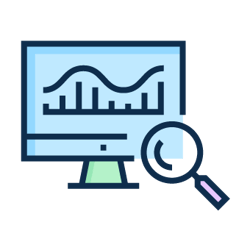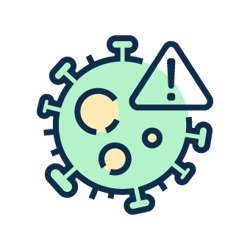Wastewater: A data-driven approach to track Norovirus spread in communities
Detect early, employ mitigation strategies, protect communities
Norovirus (NoV) is the primary pathogen that causes vomiting and diarrhea in the United States, with an estimated 19-21 million illnesses every year according to the CDC. Norovirus impacts people in all age groups — it is the leading cause of foodborne illness, and a frequent cause of outbreaks in community settings such as schools/universities, day care, long-term care facilities and more.
NoV cases at the state and local level aren’t reported to the CDC, resulting in larger data gaps when compared to other illnesses such as COVID-19.
How does Biobot monitor NoV in wastewater?
- NoV is shed in abundance in both stool and vomit, easily entering the wastewater system
- Biobot uses a highly sensitive method called quantitative polymerase chain reaction (qPCR) to identify genetic material from NoV in wastewater samples
- Report concentrations for the two most important genogroups of NoV that cause human illness: genogroup I (GI) and genogroup II (GII)
Connect with us!
Benefits of wastewater analysis for the community

Lower Admin Burden
Wastewater analysis of NoV is a passive, cost-effective way to monitor spread and trends without the resources required to track individual cases of illness.

Early Warning
As we saw with SARS-CoV-2, wastewater can be used to detect an increase in NoV prevalence in the community, often before other tracking systems. This early warning system can enable public health officials to respond quickly to mitigate outbreaks.

Comprehensive Coverage
Assess overall transmission by providing a comprehensive picture of prevalence in the community, including asymptomatic cases which would not be captured by traditional methods.

Targeted Interventions
Wastewater analysis can help identify neighborhood and building-level prevalence data for more targeted public health interventions and resource allocations.

Outbreak Prevention
Help establish a baseline and identify future outbreaks, allowing public health officials to prepare and respond more effectively.